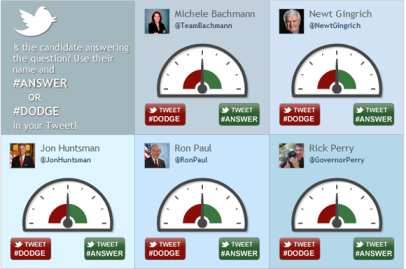 I’m the first one to admit it. I didn’t see how big Twitter was going to be. Sure enough, I was early on the band wagon when it got started, following Steve Jobs and Al Gore and others that I thought was of interest, but I failed to see just how huge it would become.
I’m the first one to admit it. I didn’t see how big Twitter was going to be. Sure enough, I was early on the band wagon when it got started, following Steve Jobs and Al Gore and others that I thought was of interest, but I failed to see just how huge it would become.
But wait a second, isn’t Twitter just a vanity exercise for the uber-savvy tech people and maybe Ashton Kutcher and Charlie Sheen?
No. It may have started out that way, but it has evolved.
In Sweden, where I’m from, it has been seen as a fad for a very long time. It was deemed a craze that would most certainly go away sometime soon. It’s quite understandable. The name itself – Twitter – is very silly in Swedish, even sillier when pronounced out loud.
In any way measured, it’s big. Right now it has a profound impact on how society works (I’ll get to this in a minute) and though Twitter itself may still decline and even disappear, the phenomenon – a common place where anyone gets to briefly comment on anything – is here to stay.
So, what’s the big deal?
Well, like with everything else that is worth following, there are new patterns emerging. Behavioral patterns as well as usage patterns. Through them, we can better understand what makes it so big.
I love patterns.
I live for patterns. I see patterns everywhere and anywhere. It’s a way for me to make sense of the world.
In the case of Twitter, I see the following interesting patterns:
The AP/REUTER Substitute Pattern
If you follow the right mix of people, you will notice that you get hit by news a lot sooner than you did before.
Way back, it used to be you read the paper in the morning to see what had happened. Along came Internet and you got a chance to get updated from your favorite newspapers once every minute if you were so inclined. Just hit Refresh/F5 in your browser.
With Twitter, you can see a big news story emerge in real time just by how many re-tweets (RT) it gets and how much it gets talked about by the ones you follow. Also, you get it pushed to your gadget of choice if you want to.
This way, you are constantly ahead of the herd.
Any way you look at it, that’s power.
The Instant Polling Tool Pattern
In the latest republican presidential wannabe debate, Fox News ran an online poll that anyone could participate in, and immediately follow the results. They let anyone with a twitter account tweet the hash tag #dodge or #answer depending on whether or not they felt their candidate dodged or answered the questions posed to them. Instant democracy.
In addition to the polling of candidates, most tv-shows these days publish hash tags to follow during the airing of the show to get more information on the characters or the plot of the show.
The History / Re-Living Great Events Pattern
During the last year, users like @RealTimeWWII with real time tweets of WWII in 1939 and 6 years onwards, or historic persons like Chuck Yeager, have emerged. You get to see what they did this day in a year of their life.
Sounds silly? Maybe, but it’s quite addictive.
To be able to follow what happened along the Maginot line in 1939, re-living history, getting a sense of what the newspapers were filled with those days, is a way to better understand why events play out the way do, even today.
A niche within this pattern is the occurrence of fictive persons like president Bartlet from the TV-show West Wing, commenting for instance, the latest speech from Obama.
The “I’m part of a movement” Pattern
What makes someone cover their body with tattoos or dress completely in black or have Mohawk hairdos? The answer is simple. It gives a sense of belonging with others of the same persuasion; a sense of purpose. That’s one of two great drivers in the life of any individual, according to Freud.
The same rules apply on Twitter. To get to hang with your “crowd”, be it imaginary or real, is quickly becoming a really big thing. The ability to communicate with Ashton Kutcher, President Obama or Swedish FM Carl Bildt – even though they’ll probably never answer you – is becoming a way for many people to define who they are, getting a sense of belonging they probably miss in actual reality.
This is what Twitter has become.
It may have started out as a vanity exercise for the 0.1% of intellectual elite, but is nowadays so much more.
I think the biggest misconception about it is that you have to be active and “say stuff” to be on Twitter. You don’t. I have zero tweets on my personal account, but it gave me the news on iPhone 4S, the Fukuoka Earthquake, and a quick analysis of yesterdays FED meeting, before any of the traditional media outlets had it.
That’s worth something to me.

Joel
Today I picked up on KLM’s move to “meet and seat” via Twitter http://www.zdnet.com/blog/facebook/airlines-use-facebook-to-pick-who-you-sit-with/6390. Interesting idea. Wonder if Dan would have met more interesting people on his flights that way…